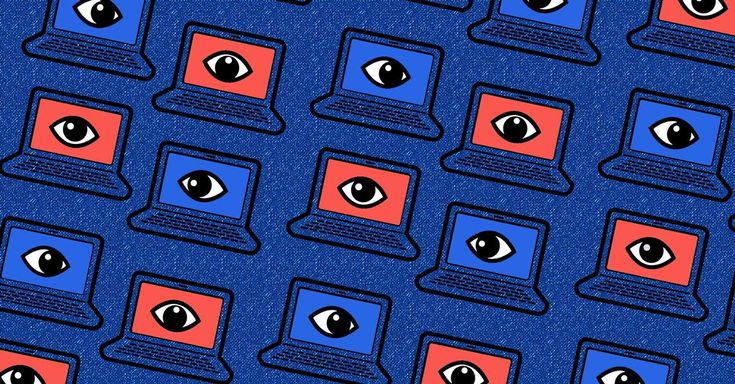In an increasingly interconnected world, where every click, search, and interaction leaves a digital footprint, online privacy has transcended from a technical concern to a fundamental human right and a paramount societal issue. It’s the ability of individuals to control their personal information, dictate who has access to it, and determine how it’s used. Far from being an abstract concept, the erosion of online privacy carries tangible risks, from identity theft and financial fraud to manipulative advertising and even reputational damage. In an age dominated by vast data collection, surveillance capitalism, and sophisticated tracking technologies, safeguarding our digital selves isn’t merely a preference; it’s an urgent necessity. Recognizing that online privacy matters most is the crucial first step towards reclaiming control in our pervasive digital lives.
The Evolution of Privacy: From Physical Walls to Digital Boundaries
To fully grasp the critical importance of online privacy today, it’s essential to understand how the concept of privacy itself has evolved, adapting to the ever-changing technological landscape.
A. Traditional Notions of Privacy
For centuries, privacy was largely a physical concept, tied to physical spaces and tangible interactions.
- Privacy of Home and Property: The idea of a private domicile, a space where one could retreat from public scrutiny, was foundational. Laws protecting homes from unwarranted intrusion reflected this.
- Privacy of Correspondence: Letters and personal communications were considered private, with legal protections against tampering or unauthorized reading.
- Privacy in Public Spaces (Limited Expectation): While one had little expectation of privacy in truly public squares, there were still social norms around personal space and information sharing.
- Limitations: These traditional notions struggled to adapt to new technologies. For instance, early photography and eavesdropping devices began to challenge the boundaries of physical privacy, but the scale of data collection remained limited.
B. The Dawn of the Information Age: Early Digital Challenges
The advent of computing and the internet introduced entirely new dimensions to privacy, shifting the focus from physical space to data.
- Mainframe Databases: Early large databases, used by governments and corporations, began collecting and centralizing vast amounts of personal information. Concerns arose about who controlled this data and how it might be used.
- The Rise of the Internet (Early Days): The initial internet was a relatively innocent space, with less commercial tracking. However, even then, the ease of sharing information globally sparked new privacy debates.
- Email and Online Forums: While revolutionary for communication, these platforms introduced new vulnerabilities, as personal messages could be forwarded, intercepted, or exposed.
- Early Data Breaches: As more data moved online, the first significant data breaches began to highlight the fragility of digital information and the risks of centralization.
- Limitations: The early internet lacked sophisticated tracking. Users might be identified by IP addresses, but granular behavioral tracking across multiple sites was not yet prevalent. Privacy concerns were nascent compared to today’s complexities.
C. The Era of Pervasive Connectivity and Data Monetization
The explosion of social media, smartphones, and sophisticated tracking technologies fundamentally redefined online privacy, pushing it to a crisis point.
- Social Media’s Impact: Platforms like Facebook, Twitter, and Instagram encouraged users to share unprecedented amounts of personal information—photos, locations, interests, relationships—often without fully understanding the privacy implications or the long-term reach of their posts. The lines between public and private blurred.
- Smartphone Ubiquity: Mobile devices, equipped with GPS, cameras, microphones, and accelerometers, became constant data-gathering instruments, tracking location, movement, and even ambient conversations. Apps requested access to vast amounts of personal data, often with vague justifications.
- Ad-Tech Ecosystem: The rise of online advertising created a multi-billion dollar industry built on tracking user behavior, interests, and demographics across websites and apps. Third-party cookies, tracking pixels, and device fingerprinting became pervasive, creating detailed profiles of individuals for targeted advertising.
- Data Brokers: Companies emerged whose sole business was to collect, aggregate, and sell personal data from various sources (online and offline), often without explicit user consent or knowledge, creating incredibly detailed, marketable profiles.
- Surveillance Capitalism: Coined by Shoshana Zuboff, this term describes an economic system where companies extract behavioral data as a raw material for prediction and manipulation, turning private lives into profit. This marked a profound shift from privacy as a personal choice to privacy as a battleground against economic exploitation.
- Government Surveillance: Post-9/11 and with revelations from whistleblowers like Edward Snowden, the extent of government surveillance programs (collecting internet communications, phone records) became starkly apparent, raising concerns about state overreach and the balance between security and privacy.
This relentless progression underscores that online privacy is no longer a niche concern. It is a defining challenge of our digital age, requiring conscious effort and robust solutions to protect individual autonomy and freedom in an increasingly transparent world.
Why Online Privacy Matters Most: The Tangible Risks
The erosion of online privacy isn’t just an abstract concept; it carries very real and often severe consequences for individuals, businesses, and society at large. Recognizing these tangible risks clarifies why online privacy matters most.
A. Personal and Financial Vulnerabilities
A lack of online privacy directly exposes individuals to various forms of harm.
- Identity Theft: When personal data (names, addresses, birth dates, social security numbers) is exposed through breaches or careless sharing, it becomes easier for criminals to steal one’s identity, open fraudulent accounts, or engage in other forms of financial crime.
- Financial Fraud: Exposed financial information (credit card numbers, bank details) can lead to direct monetary loss through unauthorized transactions or account takeovers. Phishing attacks, often crafted using personal information, can trick individuals into revealing sensitive data.
- Targeted Scams and Manipulation: Detailed personal profiles allow scammers and malicious actors to craft highly convincing and personalized phishing attempts, social engineering attacks, or manipulative advertisements that exploit individual vulnerabilities or biases.
- Reputational Damage: Exposed private communications, photos, or sensitive personal details can lead to public embarrassment, social ostracization, or damage to one’s professional reputation, with long-lasting consequences.
- Online Harassment and Stalking: Detailed online footprints can provide malicious individuals with information (e.g., location, daily routines, social circles) that facilitates online harassment, cyberstalking, or even physical threats.
B. Erosion of Autonomy and Freedom
Beyond direct harm, a lack of online privacy fundamentally undermines individual autonomy and freedom in a democratic society.
- Chilling Effect on Free Speech: When individuals fear that their online activities, searches, or communications are being constantly monitored, they may self-censor, hesitate to express dissenting opinions, or refrain from seeking sensitive information, leading to a chilling effect on free speech and open discourse.
- Behavioral Manipulation: Companies and political entities can use highly personalized data to craft manipulative messages or experiences designed to influence purchasing decisions, political views, or even emotional states, often without the individual’s conscious awareness or consent.
- Discrimination and Exclusion: Personal data profiles can be used to unfairly discriminate against individuals in areas like employment, housing, insurance, or credit access, based on inferred characteristics (e.g., health status, political affiliation) that are not legally permissible grounds for discrimination.
- Loss of Control: The continuous collection and monetization of personal data, often without transparent consent, fundamentally deprives individuals of control over their own digital identity and information, leading to a feeling of powerlessness.
C. Risks for Businesses and Organizations
Online privacy isn’t just an individual concern; it poses significant risks and responsibilities for businesses.
- Reputational Harm and Loss of Customer Trust: Data breaches or perceived misuse of customer data can severely damage a company’s reputation, leading to a significant loss of customer trust, loyalty, and market share.
- Regulatory Fines and Legal Penalties: Non-compliance with increasingly stringent global privacy regulations (e.g., GDPR, CCPA, LGPD) can result in massive fines, legal battles, and costly lawsuits, impacting financial stability.
- Operational Disruptions: Cybersecurity incidents often involve significant operational disruptions, downtime, and resource diversion to investigate and remediate breaches, leading to lost productivity and revenue.
- Competitive Disadvantage: Companies perceived as lax on privacy may lose business to competitors who demonstrate a stronger commitment to data protection, as consumers become more privacy-aware.
- Employee Privacy Concerns: Businesses also have a responsibility to protect their employees’ privacy, with implications for internal data handling, monitoring policies, and cybersecurity training.
D. Societal and Democratic Implications
At a macro level, the erosion of online privacy can undermine the very foundations of democratic societies.
- Weakening Democratic Processes: The use of personal data for targeted political micro-targeting, spread of misinformation, and manipulation of public opinion can undermine fair elections and informed public discourse.
- Rise of Surveillance States: Unchecked data collection capabilities, combined with advanced AI, can pave the way for pervasive surveillance states, eroding civil liberties and human rights on a grand scale.
- Erosion of Collective Trust: A general sense that personal data is constantly being exploited or exposed can lead to a pervasive lack of trust in digital platforms, institutions, and even government, making collective action and social cohesion more difficult.
These multifaceted risks underscore that online privacy is not a luxury but a critical component of individual well-being, economic stability, and democratic health.
Key Pillars for Safeguarding Online Privacy
Protecting online privacy requires a multi-faceted approach, involving individual actions, technological solutions, and robust regulatory frameworks.
A. Individual Responsibility and Digital Literacy
Empowering individuals with the knowledge and tools to manage their own privacy is a crucial first line of defense.
- Strong Passwords and Multi-Factor Authentication (MFA): Using unique, complex passwords for different accounts and enabling MFA significantly reduces the risk of unauthorized access even if passwords are stolen.
- Privacy Settings Management: Actively reviewing and adjusting privacy settings on social media platforms, apps, and browsers to limit data sharing and tracking.
- Mindful Sharing: Being aware of the information shared online, particularly on social media, and understanding its potential long-term implications. The internet has a long memory.
- Recognizing Phishing and Scams: Developing digital literacy to identify and avoid common online scams, phishing attempts, and social engineering tactics designed to extract personal information.
- Using Privacy-Enhancing Tools: Adopting tools like privacy-focused browsers (e.g., Brave, Firefox Focus), VPNs (Virtual Private Networks), ad blockers, and secure messaging apps (e.g., Signal, Telegram).
- Regular Software Updates: Keeping operating systems, browsers, and applications updated to patch security vulnerabilities that could be exploited by malicious actors.
B. Technological Solutions and Privacy-Enhancing Technologies (PETs)
Innovation in privacy-by-design principles and specialized technologies provides powerful tools for data protection.
- End-to-End Encryption (E2EE): Ensuring that communications (e.g., messaging, video calls) are encrypted from the sender’s device to the recipient’s device, so only the participants can read them.
- Differential Privacy: Techniques that add statistical noise to datasets, allowing for analysis and insights without revealing individual-level information, protecting privacy in large data queries.
- Homomorphic Encryption: Allows computations to be performed on encrypted data without decrypting it, providing a powerful way to process sensitive information securely in cloud environments.
- Federated Learning: A machine learning approach where models are trained on decentralized data (e.g., on individual devices) and only aggregated insights are shared, keeping raw data private.
- Secure Multi-Party Computation (SMC): Enables multiple parties to jointly compute a function over their inputs while keeping those inputs private.
- Browser Privacy Features: Browser manufacturers are increasingly integrating features like Intelligent Tracking Prevention (ITP) and Enhanced Tracking Protection (ETP) to block third-party tracking cookies by default.
C. Robust Regulatory Frameworks and Data Governance
Effective policy and legal structures are essential to enforce privacy rights and hold organizations accountable.
- General Data Protection Regulation (GDPR) – EU: A landmark regulation that sets strict rules on how personal data must be collected, stored, processed, and protected, granting individuals significant rights over their data. It has a broad extraterritorial reach.
- California Consumer Privacy Act (CCPA) / California Privacy Rights Act (CPRA) – US: Provides California residents with rights similar to GDPR, including the right to know what personal information is collected, to delete it, and to opt-out of its sale.
- Other National and Regional Laws: Numerous other countries and regions are enacting or strengthening their own privacy laws (e.g., LGPD in Brazil, PIPEDA in Canada, privacy laws in India, China, Australia).
- Data Minimization: A key principle enforced by regulations, dictating that organizations should only collect the minimum amount of personal data necessary for a specific purpose.
- Purpose Limitation: Data collected for one purpose should not be used for a new, unrelated purpose without explicit consent.
- Data Subject Rights: Regulations typically grant individuals rights such as access to their data, rectification, erasure (right to be forgotten), restriction of processing, data portability, and the right to object.
- Independent Supervisory Authorities: Many regulations establish independent bodies responsible for overseeing compliance and enforcing privacy laws.
D. Corporate Accountability and Ethical Business Practices
Beyond legal compliance, companies have a moral and business imperative to prioritize privacy.
- Privacy by Design and Default: Integrating privacy considerations into every stage of product and service development, rather than as an afterthought. This means designing systems to protect privacy from the ground up, and ensuring the most privacy-protective settings are the default.
- Transparent Data Practices: Clearly and concisely informing users about what data is collected, why it’s collected, how it’s used, and with whom it’s shared, avoiding opaque terms of service.
- Data Governance Frameworks: Implementing robust internal policies, procedures, and organizational structures to ensure responsible data handling, security, and compliance.
- Ethical Data Use: Moving beyond mere compliance to consider the broader ethical implications of data collection and AI use, and prioritizing user trust and well-being over maximal data exploitation.
- Chief Privacy Officer (CPO): Appointing dedicated privacy professionals (CPOs) to oversee privacy strategy and compliance within an organization.
Emerging Trends and Challenges in Online Privacy
The battle for online privacy is dynamic, with new technologies and societal shifts constantly introducing new challenges and demands for innovative solutions.
A. The Rise of Generative AI and Large Language Models (LLMs)
Generative AI, like ChatGPT, presents new privacy frontiers.
- Training Data Privacy: LLMs are trained on vast datasets, often scraped from the internet, which may contain personal or sensitive information. Ensuring the privacy of this training data is a massive challenge.
- Inadvertent Personal Information Disclosure: LLMs can sometimes ‘memorize’ or regurgitate sensitive personal information that was part of their training data, leading to privacy breaches.
- Prompt Hacking and Data Exfiltration: Users might inadvertently feed sensitive data into LLM prompts, and there’s a risk of this data being exfiltrated or used for retraining without consent.
- “Hallucinations” of Personal Data: LLMs can sometimes generate plausible but fabricated personal information about real individuals, leading to reputational harm or misinformation.
B. Biometric Data and Surveillance Technologies
The increasing use of biometric data (facial recognition, fingerprints, gait analysis) poses unique privacy challenges.
- Mass Surveillance: Facial recognition technology, particularly when deployed in public spaces by governments or private entities, raises concerns about pervasive surveillance and the loss of anonymity.
- Sensitive Personal Data: Biometric data is inherently unique and permanent. Its compromise or misuse carries higher risks than other forms of personal data, as it cannot be easily changed.
- Regulation Lag: Legal and ethical frameworks often struggle to keep pace with the rapid deployment of these powerful technologies.
C. The Metaverse and Immersive Privacy
The development of persistent, immersive virtual worlds brings entirely new privacy dimensions.
- Real-time Behavioral Tracking: In a metaverse, avatars’ movements, interactions, gaze direction, emotional responses (via biometrics), and even physiological data could be continuously tracked and monetized.
- Identity and Anonymity: Managing real-world identity versus virtual identity, and the ability to maintain anonymity or pseudonymity, will be critical.
- Virtual Asset Ownership and Privacy: Protecting ownership and privacy of virtual assets (NFTs, digital goods) will be a new frontier.
- Data Sharing Across Virtual Worlds: Interoperability between metaverse platforms will necessitate new privacy protocols for data sharing across different virtual environments.
D. The Paradox of Convenience and Privacy
Consumers often make trade-offs between convenience and privacy.
- Consent Fatigue: Users are bombarded with privacy notices and consent forms, leading to ‘consent fatigue’ where they simply click ‘accept’ without fully understanding the implications.
- Privacy as a Premium: Some companies may offer enhanced privacy features as a premium service, potentially creating a tiered privacy landscape where those who can afford to pay get better protection.
- Dark Patterns: Designers intentionally or unintentionally use ‘dark patterns’ (deceptive UI/UX) to nudge users into making privacy-compromising choices, exploiting cognitive biases.
E. Geopolitical Fragmentation of Privacy Laws
While GDPR set a high standard, there’s a growing trend of countries developing their own, sometimes conflicting, privacy laws.
- Regulatory Harmonization Challenges: This fragmentation creates a complex compliance landscape for global businesses and makes it difficult to establish truly global privacy standards.
- Data Localization Requirements: Some countries demand that data be stored within their borders, which can hinder global data flows and cloud service adoption.
- Jurisdictional Conflicts: Determining which country’s privacy laws apply when data crosses multiple borders remains a complex legal challenge.
The Road Ahead: Reclaiming Control and Building a Privacy-First Digital Future
Securing online privacy is a continuous endeavor that requires collective action and a commitment to innovation, regulation, and education.
A. Empowering Individuals with Usable Privacy Tools
The future must focus on providing individuals with intuitive and effective tools to manage their privacy without requiring deep technical expertise.
- Simplified Consent Mechanisms: Moving beyond verbose legal texts to clear, concise, and actionable consent interfaces.
- Privacy Dashboards: Centralized, user-friendly dashboards that provide a clear overview of all personal data collected by platforms and allow easy control over sharing and deletion.
- AI-Powered Privacy Assistants: Intelligent agents that can analyze app permissions, suggest privacy settings, and alert users to potential data breaches.
- Interoperable Data Portability: Making it easier for users to download their data and seamlessly transfer it between services.
B. Strengthening Regulatory Enforcement and Global Cooperation
Regulation must evolve to keep pace with technology and ensure effective enforcement.
- Harmonization Efforts: International efforts to harmonize privacy standards and facilitate cross-border data flows while respecting privacy rights.
- Proactive Regulation: Regulatory bodies adopting a more proactive stance, developing regulations in anticipation of emerging technologies (e.g., AI, metaverse) rather than reacting after widespread adoption.
- Meaningful Fines and Penalties: Ensuring that penalties for privacy violations are substantial enough to act as a genuine deterrent, compelling companies to prioritize compliance.
- Independent Audit and Oversight: Strengthening the power of independent supervisory authorities to conduct audits, investigate complaints, and enforce regulations without political interference.
C. Shifting Corporate Culture to Privacy-by-Design
Businesses must move beyond mere compliance to embed privacy as a core value.
- Ethical AI Development: Developing and deploying AI systems with privacy, fairness, and transparency as fundamental design principles.
- Data Ethics Committees: Establishing internal committees to review and guide data practices and AI development from an ethical perspective.
- Transparency Reports: Regular publication of detailed reports on data requests from governments, data breaches, and privacy-related incidents to foster public trust.
- Competitive Differentiation: Companies that genuinely prioritize and demonstrate strong privacy practices can differentiate themselves and build a competitive advantage in a privacy-aware market.
D. Fostering a Culture of Privacy Literacy
Education and awareness are vital for all stakeholders.
- Comprehensive Digital Literacy Programs: Integrating privacy education into school curricula and public awareness campaigns to equip citizens with the knowledge to navigate the digital world safely.
- Continuous Public Dialogue: Encouraging ongoing public and academic discourse on the ethical, social, and economic implications of technology and privacy.
- Media Accountability: Promoting responsible journalism that informs the public about privacy risks and solutions, avoiding sensationalism.
E. Innovation in Decentralized Technologies
Decentralized technologies hold promise for shifting power back to individuals.
- Decentralized Identity (DID): Technologies that allow individuals to control their own digital identities, issuing verifiable credentials without relying on central authorities.
- Blockchain for Data Auditing: Using blockchain to create immutable audit trails for data access and usage, increasing transparency and accountability.
- Privacy-Preserving Computation: Further research and development in technologies like federated learning, homomorphic encryption, and secure multi-party computation will enable collaboration and data analysis without compromising privacy.
Conclusion
In the relentless march of technological progress, the question of online privacy has emerged as one of the most critical challenges of our time. It is not a secondary consideration or a niche concern; it is a fundamental pillar of individual autonomy, democratic health, and a trustworthy digital ecosystem. The pervasive collection and analysis of personal data, driven by sophisticated tracking technologies and economic incentives, pose tangible risks ranging from identity theft and manipulative advertising to chilling effects on free speech and the potential for systemic discrimination. Recognizing that online privacy matters most is the bedrock upon which a more secure and equitable digital future can be built.
The path forward demands a concerted, multi-stakeholder effort. It requires empowering individuals with intuitive privacy tools and enhanced digital literacy, while simultaneously strengthening robust regulatory frameworks that hold corporations accountable. Furthermore, businesses must embed privacy-by-design principles into their core operations, prioritizing ethical data practices over unchecked data exploitation. As we navigate the complex terrains of generative AI, the immersive metaverse, and the continued integration of our physical and digital lives, fostering a culture of privacy literacy and investing in innovative privacy-enhancing technologies will be paramount. Ultimately, safeguarding online privacy is about reclaiming control over our digital selves, ensuring that the transformative power of technology serves humanity, rather than diminishing our fundamental rights and freedoms. This is the urgent work of today, shaping the very fabric of tomorrow’s interconnected world.














